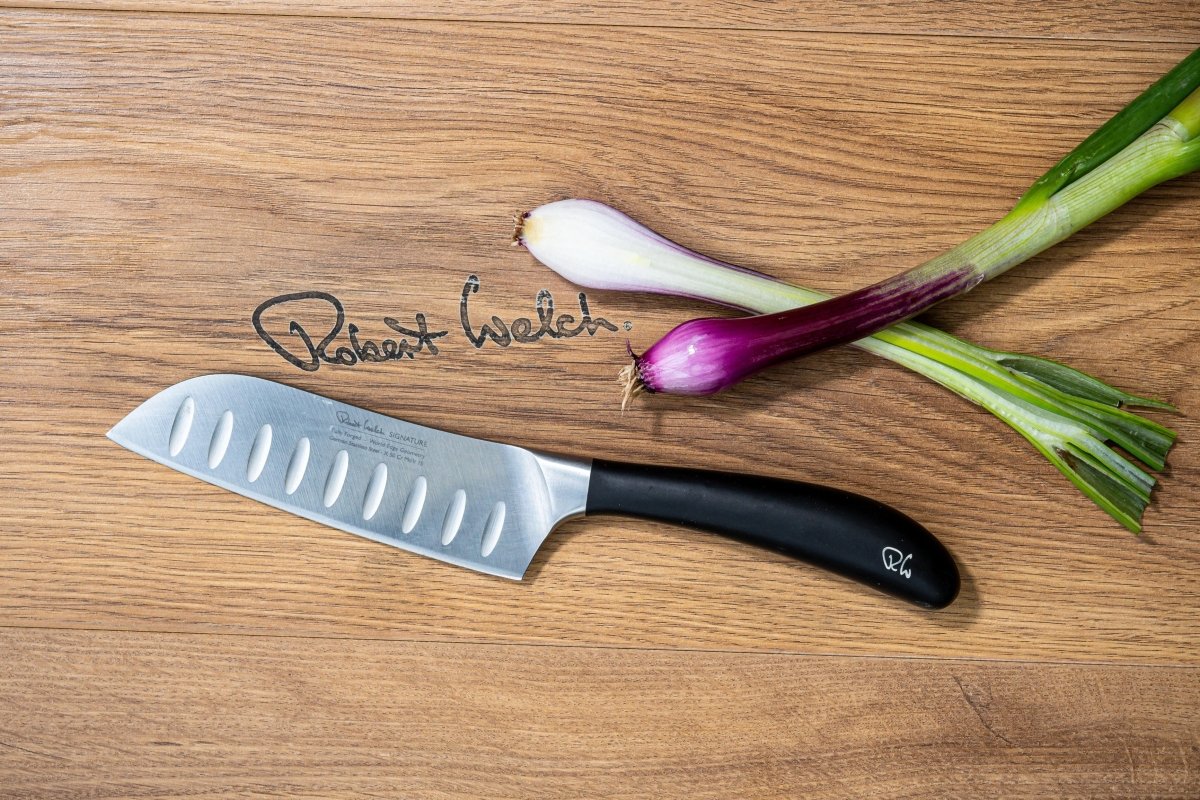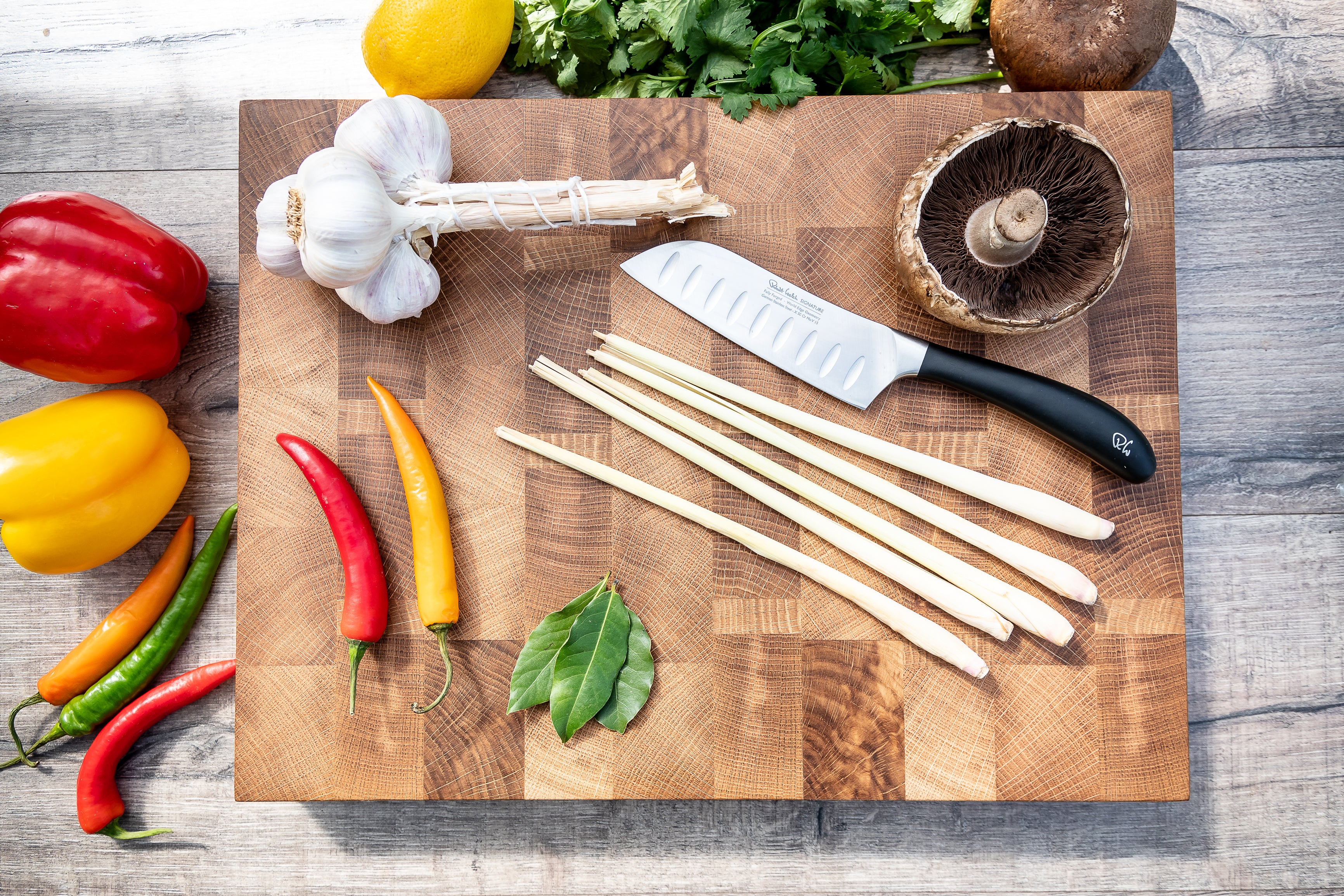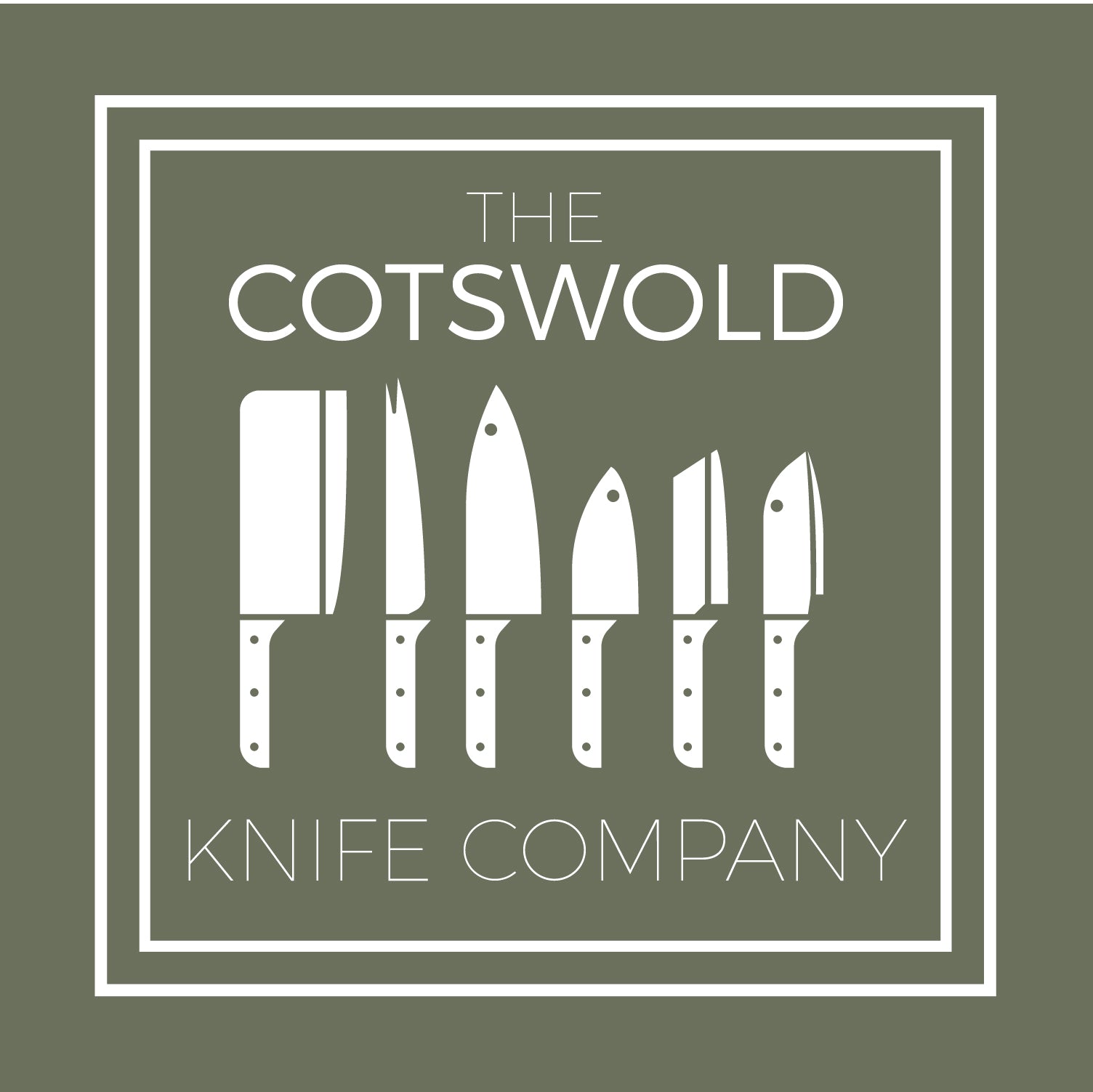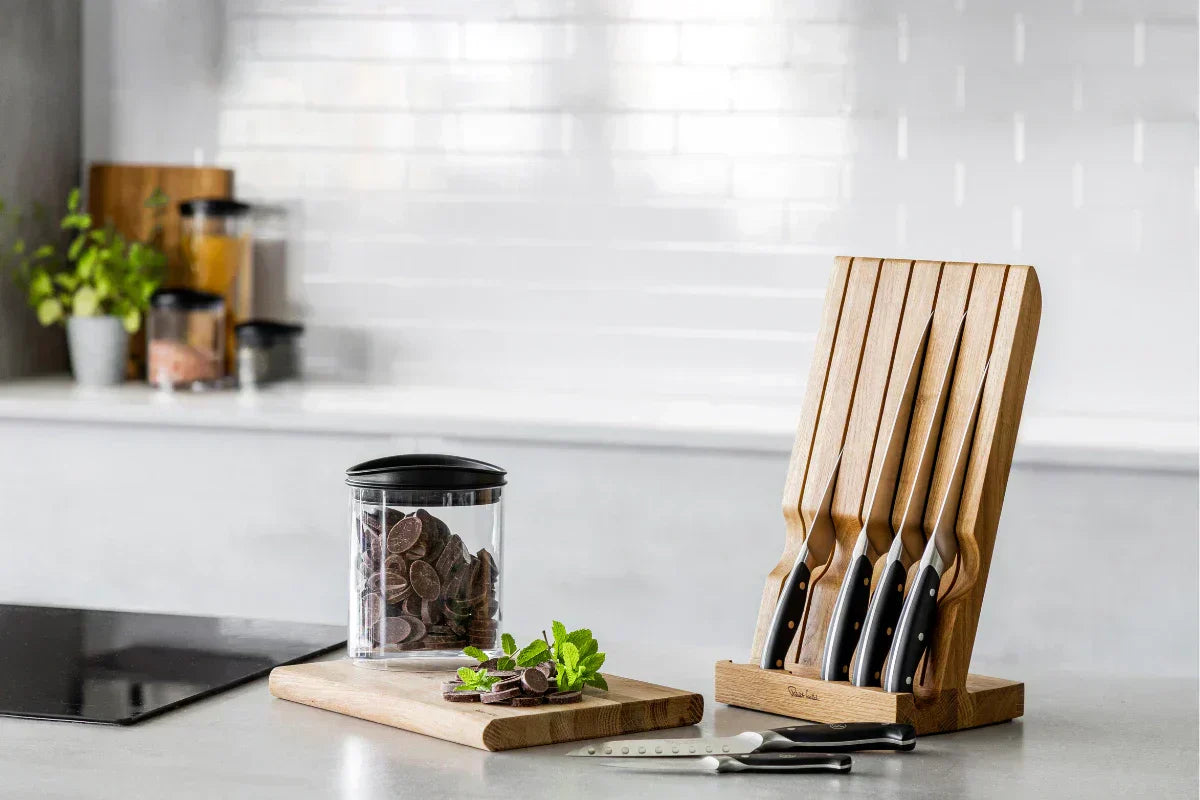Mastering the Santoku Knife: When & How To Use It

Santoku Knives
In this post, we'll be exploring the world of santoku knives and answering the question of when and why you should use one. Whether you're a professional chef or a home cook, santoku knives are versatile tools that can be a great addition to your kitchen. In this post, we'll cover the anatomy of a santoku knife, the unique features that make it stand out from other knives, and the types of cuts and tasks that a santoku knife excels at. So, let's dive in!
What is a Santoku knife?
You may have heard of a santoku knife, but what exactly is it? A santoku knife is a versatile Japanese knife that has a shorter, wider blade than a traditional chef's knife. The blade typically ranges from five to seven inches in length and has a hollow edge that is also referred to as a scalloped edge. The hollow edge helps to prevent food from sticking to the blade while cutting, making it a popular choice for slicing, dicing, and chopping fruits, vegetables, and meats.
Santoku knives also have a unique shape, with a slight curve to the blade that creates a belly-like shape. This allows for a more natural rocking motion when cutting, similar to a chef's knife, while still maintaining the precision of a smaller blade. The shorter length and wider blade also provide more knuckle clearance, making it easier to chop and slice with less strain on your hand and wrist. The santoku knife is a versatile tool that can handle a wide variety of cutting tasks with some chefs and home cooks opting for it as their most used knife.
History & Origins
The santoku knife has its origins in Japan, where it has been used for centuries. The earliest record of the knife can be traced back to the 17th century, during the Edo period in Japan. At that time, the santoku knife was primarily used by housewives to prepare meals for their families. However, it wasn't until the mid-20th century that the santoku knife became more widely known outside of Japan. As more people around the world became interested in Japanese cuisine, the santoku knife gained popularity due to its versatility and unique features. Today, the santoku knife has evolved to include various blade lengths and designs, with many manufacturers offering their own versions of the classic Japanese knife.
Best Uses Of The Santoku Knife
Stir-fry & salads: requires you to chop up a lot of vegetables into small, even pieces. This task can be time-consuming and tiring, especially if you're using a knife that isn't suited to the job. The wide blade allows you to scoop up the vegetables as you chop them, while belly like shape allows for quick and effortless slicing when using the rock and chop technique, discussed later on the post. This means that you can prepare all your ingredients quickly and efficiently, without getting tired or frustrated.
Sushi & Meats: Making sushi requires precision and attention to detail, as this to many is an art form. A santoku knife's allows for precise control make it an ideal tool for this task. The sharp edge allows you to make clean, precise cuts through the fish, while the wider blade provides stability and control. This means that you can create beautifully sliced pieces of fish that are perfectly suited to making sushi. The same ethos can be put to slicing meats like ham and beef where the perfect slice goes a long way to crafting a mouth watering dish.

Techniques When Using A Santoku Knife
"Push-Pull" Motion: The push-pull motion is a technique commonly used in Japanese cooking and is perfect for the santoku knife. To use this technique, place the tip of the blade on the cutting board and push forward while applying pressure to the blade. Then, pull the blade back towards you while continuing to apply pressure. This motion allows for precise cuts with minimal effort and is great for slicing vegetables and meats.
Rock and Chop: Although the santoku knife is not designed for a traditional rocking motion like a chef's knife, it can still be used to rock and chop. To do this, start by using a forward motion to rock the blade back and forth across the cutting board, then use a downward chopping motion to cut through the ingredient. This technique works well for herbs, nuts, and smaller vegetables.
Flat-Surface Cutting: The flat surface of the santoku knife can be used to your advantage when cutting flat or thin ingredients like garlic or ginger. Instead of using a rocking or chopping motion, use a flat, back-and-forth slicing motion to make thin, even cuts.
Finger Guard: The wider blade of the santoku knife provides more knuckle clearance, but it's still important to use a finger guard to protect your fingers while chopping and slicing. Curl your fingertips in and use your knuckles as a guide for the blade.
By mastering these techniques, you can make the most out of your santoku knife and use it to its full potential in the kitchen.
Factors To Consider When Choosing A Santoku Knife
Blade Material: The blade material can affect the sharpness and durability of your knife. High-carbon stainless steel is a popular choice for santoku knives because it's rust-resistant, holds an edge well, and is easy to maintain.
Blade Size: Santoku knives typically come in blade lengths ranging from 5 to 7 inches. The size you choose will depend on your preference and what you plan to use the knife for. A shorter blade may be easier to control for precise cuts, while a longer blade may be better for larger ingredients.
Blade Shape: Most are straight edged with a curved tip allowing for versatile use in the kitchen as it is almost like having two types of blades within one knife.
Handle Material: The handle material can affect the grip and comfort of the knife. Look for a handle that feels comfortable and secure in your hand. Common handle materials for santoku knives include wood, plastic, and composite materials.
Price: Santoku knives can range in price from under £50 to over £500. Consider your budget and how often you plan to use the knife when making your selection.
Brand: Choosing a reputable brand can ensure that you're getting a high-quality knife that will last for years. Some popular santoku knife brands include Shun, Global, Wusthof, and Miyabi.
Maintenance
We can’t stress enough, do not use a dishwasher if you want to keep your santoku knife in top condition. Hand wash it with warm, soapy water after each use as the high temperatures and harsh detergents of a dishwasher can damage the blade and handle. After washing, dry your santoku knife thoroughly with a clean towel to prevent water spots and rust from forming on the blade.
A sharp santoku knife is essential for safe and efficient cutting. To maintain its sharp edge, use a sharpening stone or honing steel regularly. A honing steel is recommended for regular maintenance and a sharpening stone for major repairs.
Storing your santoku knife properly is important to prevent damage and keep it safe. Avoid storing it in a drawer with other utensils, as they can scratch the blade. Instead, use a knife block or magnetic strip to keep it securely in place.
Handle your santoku knife with care to prevent damage to the blade or handle. Avoid using it to cut through hard or frozen foods, as this can damage the blade. Also, never twist the blade when cutting, as this can cause it to chip or break.
Should You Invest In A Santoku Knife?
In conclusion, a Santoku knife is a versatile tool that can make your time in the kitchen more efficient and enjoyable. Its unique design allows for a range of cutting tasks, from slicing and dicing vegetables to preparing sushi and slicing roast beef. With proper technique and maintenance, a Santoku knife can last for years and become an essential tool in your kitchen arsenal making it a fantastic investment to anyone looking to take their home cooking to the next level.
If you are convinced that your kitchen is missing a santoku knife, take a look at the range available in our store, we stock the largest names in the industry whilst catering for all budgets.




